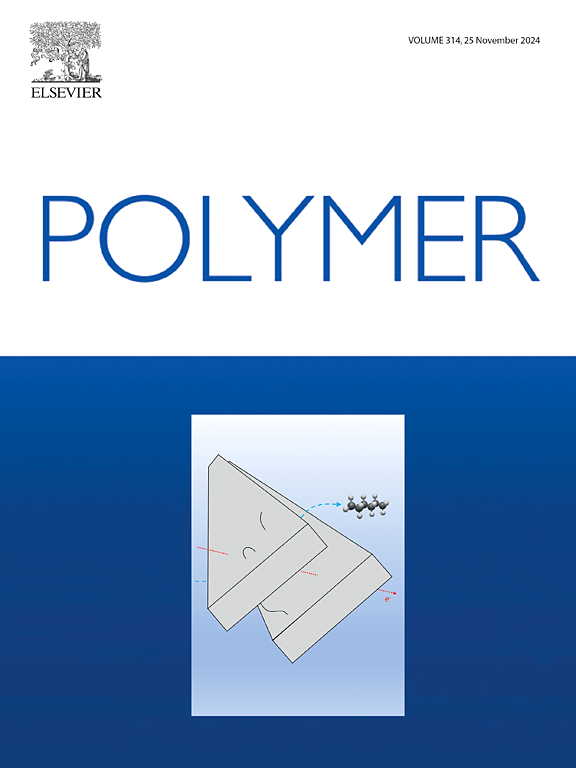Chiral structures of polymers influence their resistance to protein adsorption and bacterial adhesion as investigated by quartz crystal microbalance with dissipation
IF 4.1
2区 化学
Q2 POLYMER SCIENCE
引用次数: 0
Abstract
Chiral stereochemical strategy for antimicrobial adhesion is a newly-developed method with growing interest. However, the effect of chiral structures on the anti-biofouling property is still unclear. Herein, we employed quartz crystal microbalance with dissipation (QCM-D) to study the ability of two polyurethanes modified by distinct isomers of chiral borneol compounds to inhibit proteins adsorption and bacteria adhesion. Two types of polyurethanes containing endo-L-borneol-based side chains (PLBA) or exo-iso-borneol-based side chains (PIBA) were synthesized through a thiol-ene ‘click’ reaction and polyaddition polymerization. The structure, chirality and surface wettability of the polyurethanes (PLBA-PU/PIBA-PU) were investigated, confirming the intact molecular chirality of borneol and the improved surface hydrophobicity of the polyurethanes after introducing borneol-based side chains. We monitored the protein adsorption and bacteria adhesion on these polyurethane surfaces by QCM-D. The PLBA-PU and PIBA-PU surfaces exhibit enhanced protein resistance and antimicrobial adhesion properties. Moreover, significant difference in anti-biofouling performance was found by QCM-D between PLBA-PU and PIBA-PU, where L-configuration of borneol on the polyurethane surfaces provides enhanced anti-biofouling function compared to exo-iso-borneol.

利用石英晶体微天平研究聚合物手性结构对蛋白质吸附和细菌粘附阻力的影响
抗微生物粘附的手性立体化学策略是一种新开发的方法,受到越来越多的关注。然而,手性结构对抗菌性能的影响仍不明确。在此,我们采用石英晶体微天平耗散(QCM-D)研究了两种由不同手性冰片醇化合物异构体改性的聚氨酯抑制蛋白质吸附和细菌粘附的能力。通过硫醇-烯 "点击 "反应和加成聚合,合成了两种含有内-L-龙脑侧链(PLBA)或外-异龙脑侧链(PIBA)的聚氨酯。我们对聚氨酯(PLBA-PU/PIBA-PU)的结构、手性和表面润湿性进行了研究,结果表明引入硼烷醇侧链后,硼烷醇的分子手性保持不变,聚氨酯的表面疏水性得到改善。我们通过 QCM-D 监测了这些聚氨酯表面的蛋白质吸附性和细菌粘附性。PLBA-PU 和 PIBA-PU 表面具有更强的抗蛋白质和抗菌粘附性能。此外,QCM-D 还发现 PLBA-PU 和 PIBA-PU 的抗生物污垢性能存在明显差异,其中聚氨酯表面的 L 构型龙脑与外异龙脑相比具有更强的抗生物污垢功能。
本文章由计算机程序翻译,如有差异,请以英文原文为准。
求助全文
约1分钟内获得全文
求助全文
来源期刊

Polymer
化学-高分子科学
CiteScore
7.90
自引率
8.70%
发文量
959
审稿时长
32 days
期刊介绍:
Polymer is an interdisciplinary journal dedicated to publishing innovative and significant advances in Polymer Physics, Chemistry and Technology. We welcome submissions on polymer hybrids, nanocomposites, characterisation and self-assembly. Polymer also publishes work on the technological application of polymers in energy and optoelectronics.
The main scope is covered but not limited to the following core areas:
Polymer Materials
Nanocomposites and hybrid nanomaterials
Polymer blends, films, fibres, networks and porous materials
Physical Characterization
Characterisation, modelling and simulation* of molecular and materials properties in bulk, solution, and thin films
Polymer Engineering
Advanced multiscale processing methods
Polymer Synthesis, Modification and Self-assembly
Including designer polymer architectures, mechanisms and kinetics, and supramolecular polymerization
Technological Applications
Polymers for energy generation and storage
Polymer membranes for separation technology
Polymers for opto- and microelectronics.
 求助内容:
求助内容: 应助结果提醒方式:
应助结果提醒方式:


